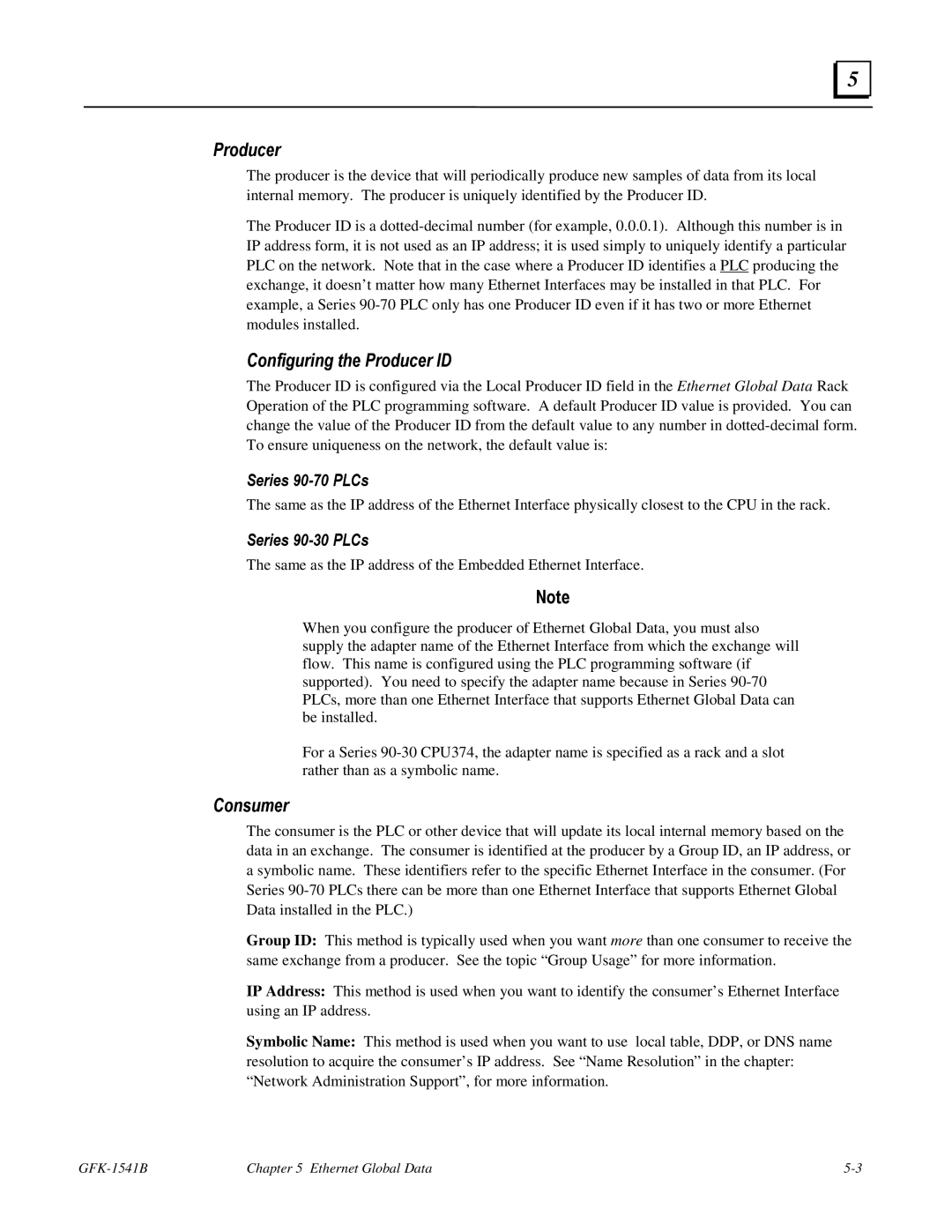5 |
Producer
The producer is the device that will periodically produce new samples of data from its local internal memory. The producer is uniquely identified by the Producer ID.
The Producer ID is a
Configuring the Producer ID
The Producer ID is configured via the Local Producer ID field in the Ethernet Global Data Rack Operation of the PLC programming software. A default Producer ID value is provided. You can change the value of the Producer ID from the default value to any number in
Series 90-70 PLCs
The same as the IP address of the Ethernet Interface physically closest to the CPU in the rack.
Series 90-30 PLCs
The same as the IP address of the Embedded Ethernet Interface.
Note
When you configure the producer of Ethernet Global Data, you must also supply the adapter name of the Ethernet Interface from which the exchange will flow. This name is configured using the PLC programming software (if supported). You need to specify the adapter name because in Series
For a Series
Consumer
The consumer is the PLC or other device that will update its local internal memory based on the data in an exchange. The consumer is identified at the producer by a Group ID, an IP address, or a symbolic name. These identifiers refer to the specific Ethernet Interface in the consumer. (For Series
Group ID: This method is typically used when you want more than one consumer to receive the same exchange from a producer. See the topic “Group Usage” for more information.
IP Address: This method is used when you want to identify the consumer’s Ethernet Interface using an IP address.
Symbolic Name: This method is used when you want to use local table, DDP, or DNS name resolution to acquire the consumer’s IP address. See “Name Resolution” in the chapter: “Network Administration Support”, for more information.
Chapter 5 Ethernet Global Data |
